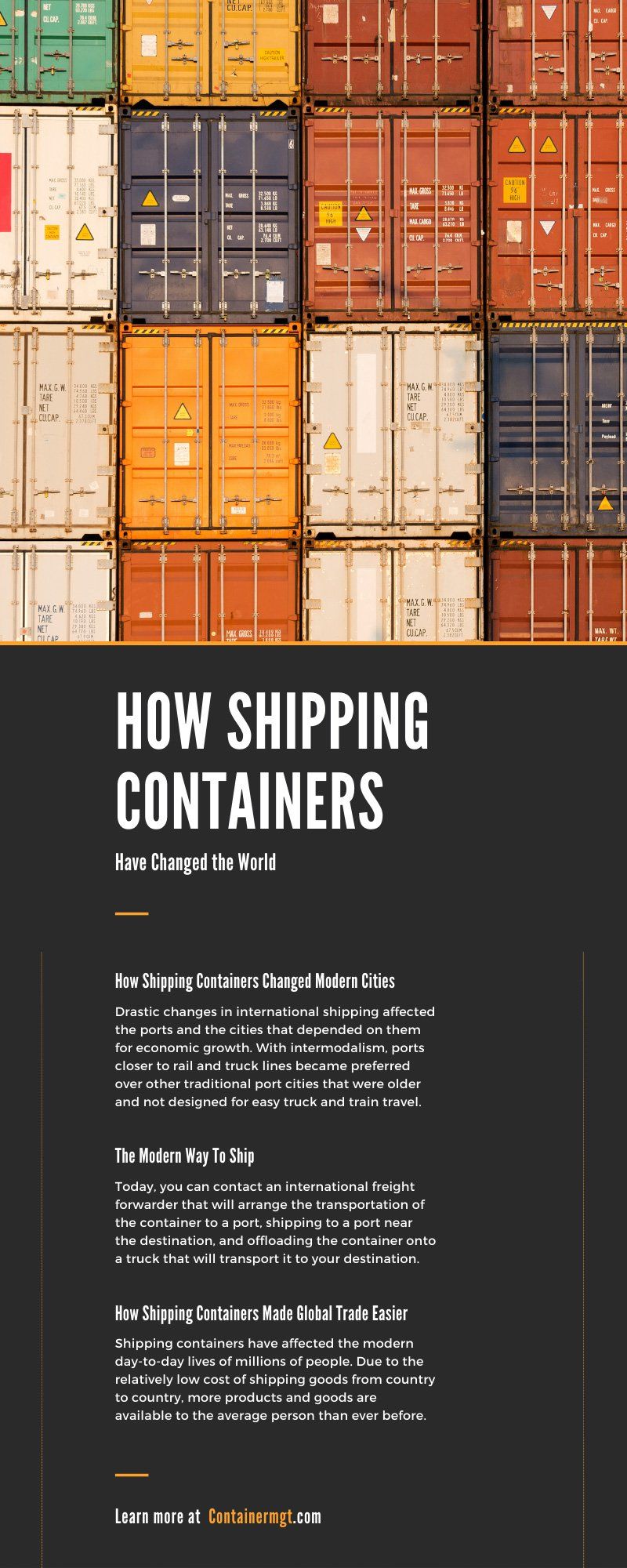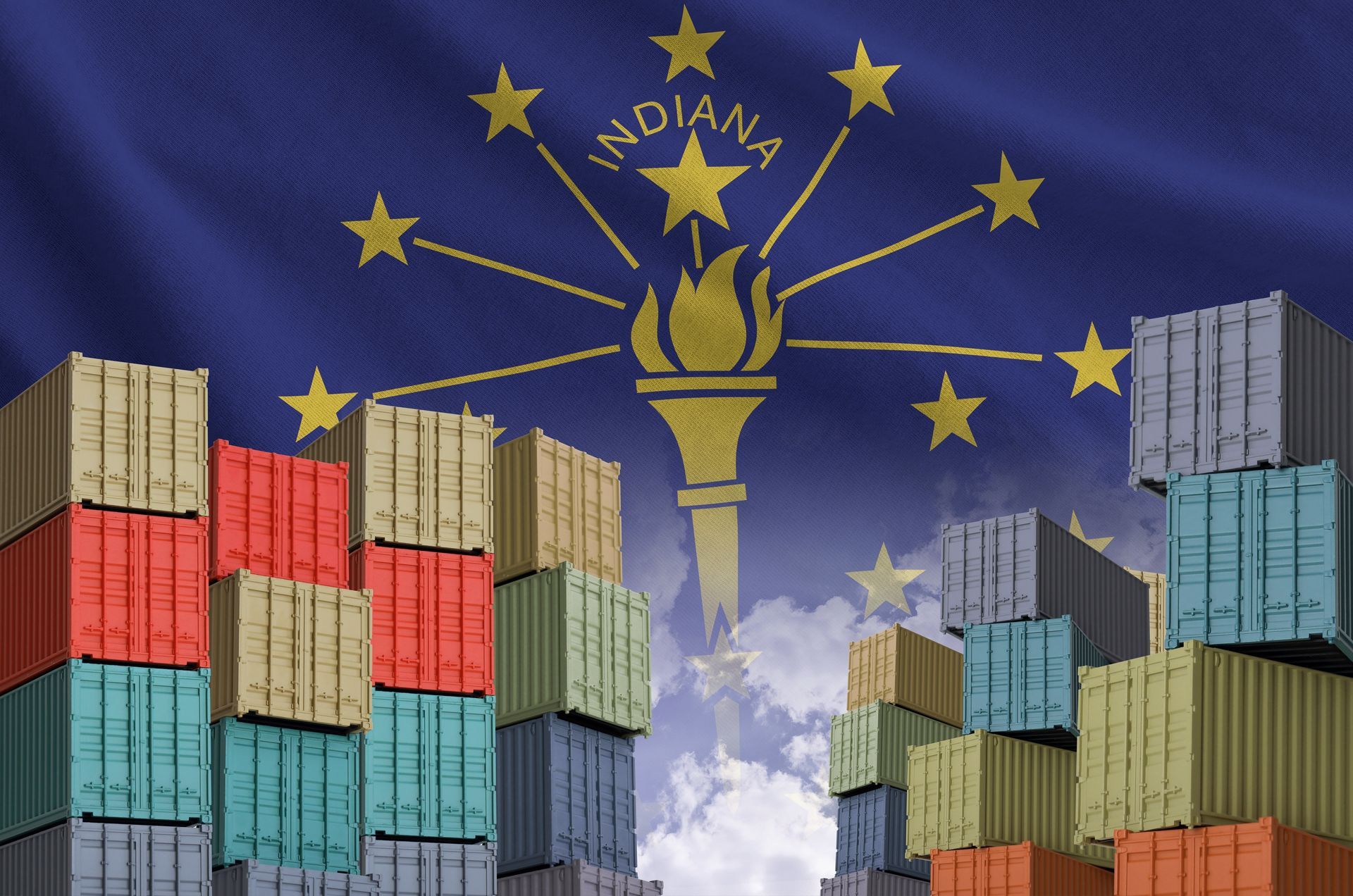Shipping Container History: How They've Changed the World
Written by Susan Nalevac | March 01, 2022
Nowadays, you can get goods like wine from Europe, fruit from Central America, and fabric from southeast Asia delivered to your door in a manner of days. It wasn’t long ago where that would’ve seemed unfathomable to most people. How is it possible?
The answer may be more straightforward than you imagined: a rectangular steel box known as a shipping container. You can write an entire book on how shipping containers have changed the world, but for now, we’ll give you a brief history of shipping containers, from their invention to their radical effect on the world!
In This Article:
Trade Before Shipping Containers
If you want to understand how the humble shipping container managed to change the daily life of millions of people, it’s essential to understand what life and trade were like before they came along.
It’s not hyperbole to say that the shipping trade existed for thousands of years and operated in much the same way despite technological advancements.
Breakbulk Cargo System
The ships may have gotten bigger and faster, and the goods they carried may have changed, but the shipping trade in the 1940s wasn’t much different from trade in the 1640s. Ships back then used the breakbulk cargo system.
Essentially, the crew would unload the cargo, piece-by-piece, from the truck or train and then load it into the cargo holds of the ship. The process was done almost entirely by hand and required a large labor force.
The unloading and loading of each piece of cargo were time-consuming and inefficient. The work was laborious, slow, and rife with delays and problems. Most ships spent more time docked at a port than out at sea. Also, because the boats were idle at ports for so long, theft of the goods was a problem.
It’s easy to look back at this way of doing things and see the glaring faults, but remember that sailors and ships had been using this system for thousands of years. During World War II, the idea of using standardized boxes for transporting war material began to take root, and standardized shipping began to make more sense.
The Invention of the Shipping Container
In 1956, Malcom McLean was a trucking entrepreneur tinkering with ideas to make goods transportation more efficient and affordable. After some trial and error, McLean got the idea for sealed containers that could be stowed directly onto ships.
In essence, what if instead of unpacking a truck full of goods, loading them onto a freighter, and tying them down in cargo holds, we could move the container directly from the transport onto the ship without unpacking it?
Intermodalism
McLean’s idea for transporting whole containers from a truck or train to a cargo ship and vice versa became known as intermodalism. The benefits were obvious; loading and unloading were much quicker, required fewer workers, and cut down on theft as ships spent less time docked at ports.
The method was much more efficient but would first require many fundamental and radical changes to the shipping industry. It took some time for intermodalism to be entirely accepted, but by the 1960s, McLean’s idea was becoming the standard all over the world.
Containerization
Intermodalism became the standard for international shipping after 1968 when shipping container dimensions became internationally standardized. These standardized dimensions are known as containerization.
Now, equipment, ships, and facilities could be better suited to fit, move, and store shipping containers. Shipbuilders designed freighters to fit more boxes, ports used cranes for loading and unloading, and the trucking and train industries changed their trucks and trains for quicker loading and unloading.
How Shipping Containers Have Changed Modern Life
As we can see today, the effect of intermodalism and containerization has changed not just the shipping industry, but modern life as we know it. By making it more efficient and faster, labor costs went down, and ships spent more time at sea than at ports, leading to lower shipping costs worldwide.
Affordable international shipping became one of the critical factors in the new era of globalization we live in today. Products from every corner of the world are now more readily available at lower prices than before intermodalism became the standard.
How Shipping Containers Changed Modern Cities
Drastic changes in international shipping affected the ports and the cities that depended on them for economic growth. With intermodalism, ports closer to rail and truck lines became preferred over other traditional port cities that were older and not designed for easy truck and train travel.
With more containers transported by bigger ships, storage space became a priority for ports. The newer ports with more green space for additional facilities thrived, while older ones in densely populated cities waned.
It’s not an exaggeration to say shipping containers have affected the economic growth and decline of many major cities globally. In America, newer ports like Oakland have prospered thanks to the extra space it could offer, while other, more densely populated ports declined.
The Modern Way To Ship
International shipping for even ordinary people and businesses is efficient and straightforward. Say, for instance, you have a shipping container in Houston, Texas, but you need to get it to Paris, France.
Today, you can contact an international freight forwarder that will arrange the transportation of the container to a port, shipping to a port near the destination, and offloading the container onto a truck that will transport it to your destination. It wasn’t too long ago that such a journey would’ve been a logistical nightmare.
How Shipping Containers Made Global Trade Easier
Shipping containers have also affected the modern day-to-day lives of millions of people. Due to the relatively low cost of shipping goods from country to country, more products and goods are available to the average person than ever before.
Visit almost any local grocery store in the United States, and you’ll find fruits from Central and South America on the shelf that are still fresh. The production of one product can now take place in stages worldwide before it winds up on a store’s shelf. You can purchase a product online that’s thousands of miles away and have it delivered to your front door in a matter of days.
Now, the easy movement of goods from port to port around the world is commonplace for many people, to the point where we don’t even question it. Thanks to intermodalism, you can get fresh Mexican avocados in Oregon or bedding from China in Tennessee at an affordable price.
Shipping containers profoundly affect our lives in ways that we hardly even notice. But next time you’re in a market or store and see goods from the other side of the globe, you’ll remember how shipping containers have changed the world!






